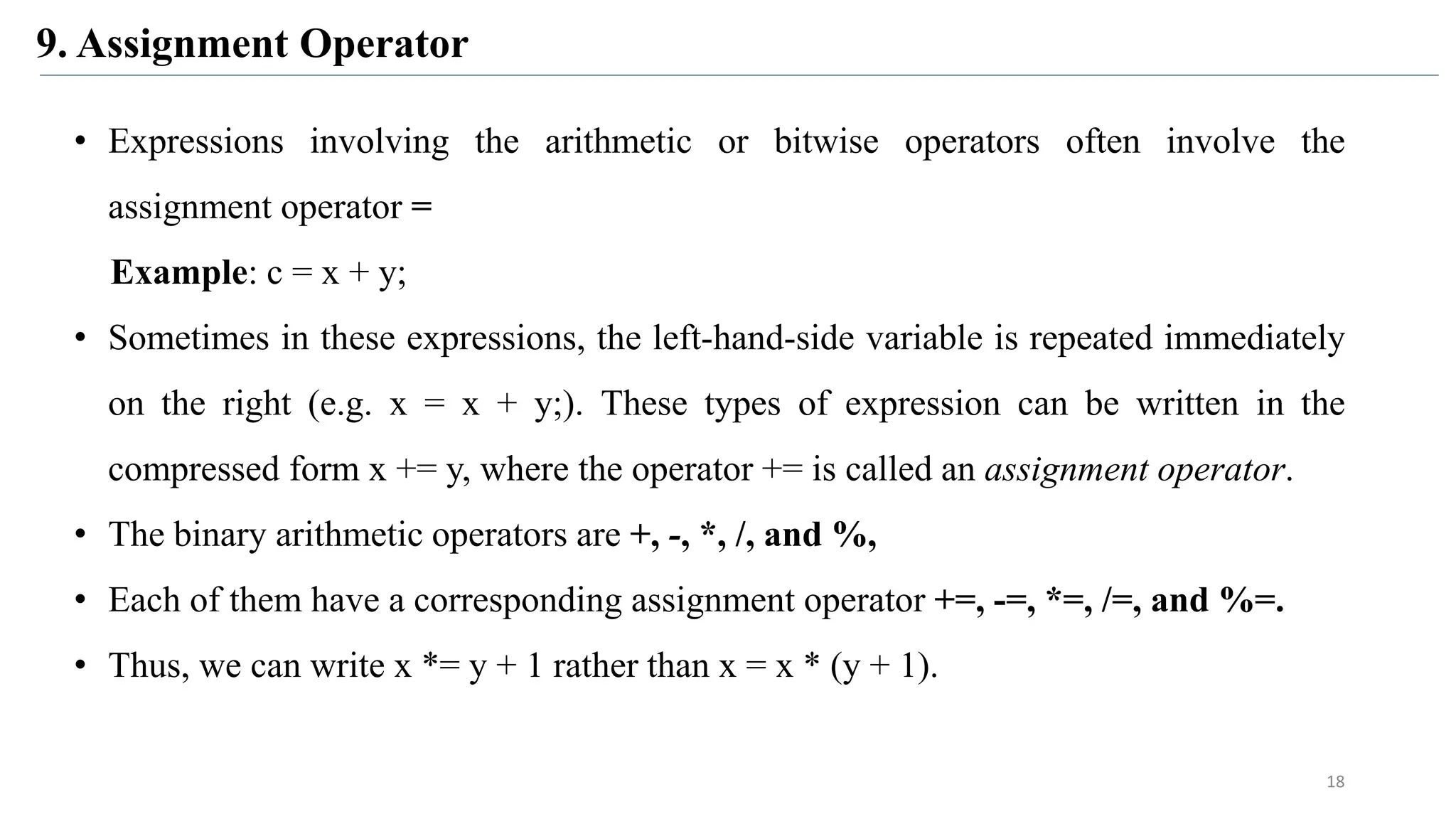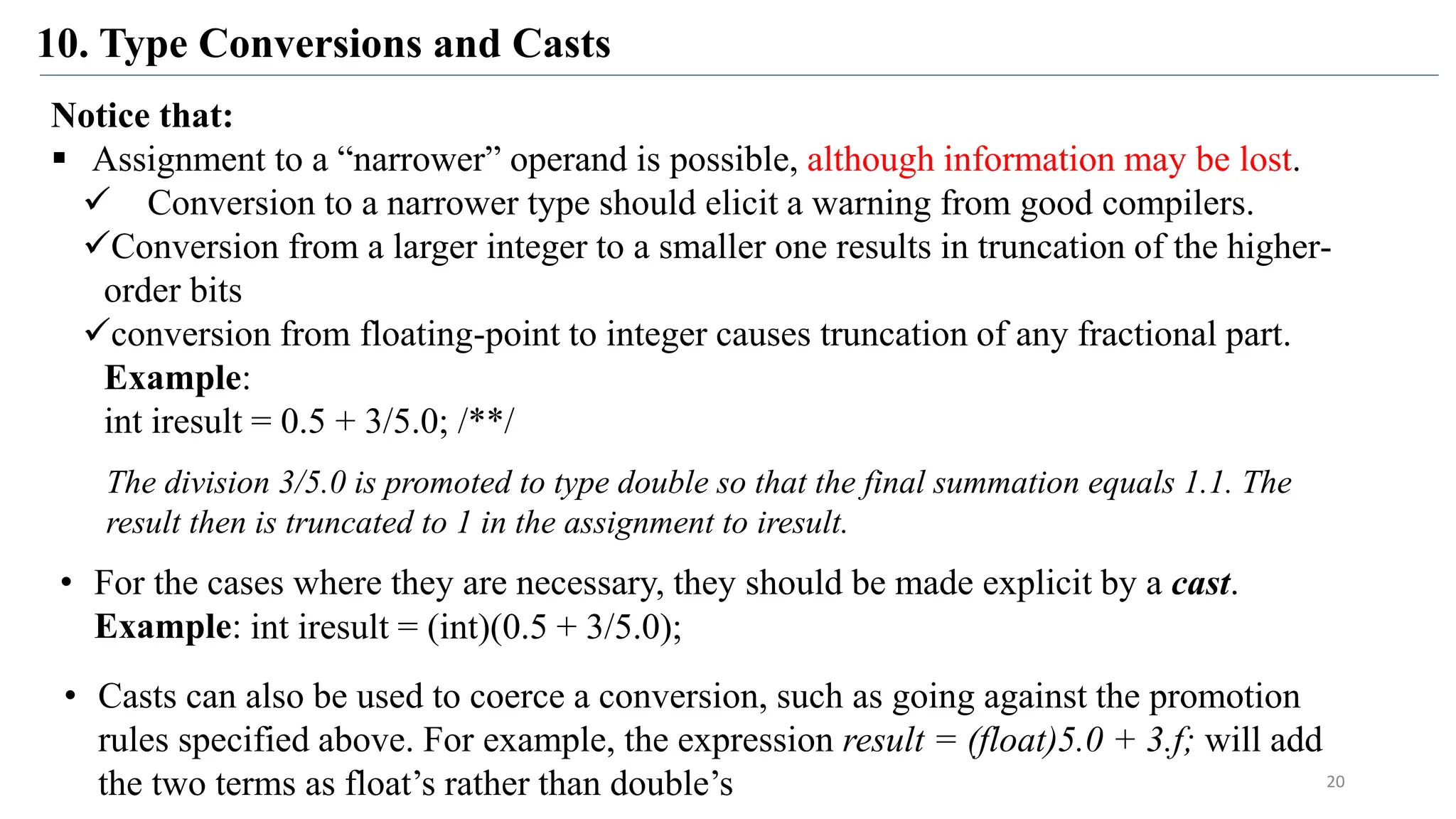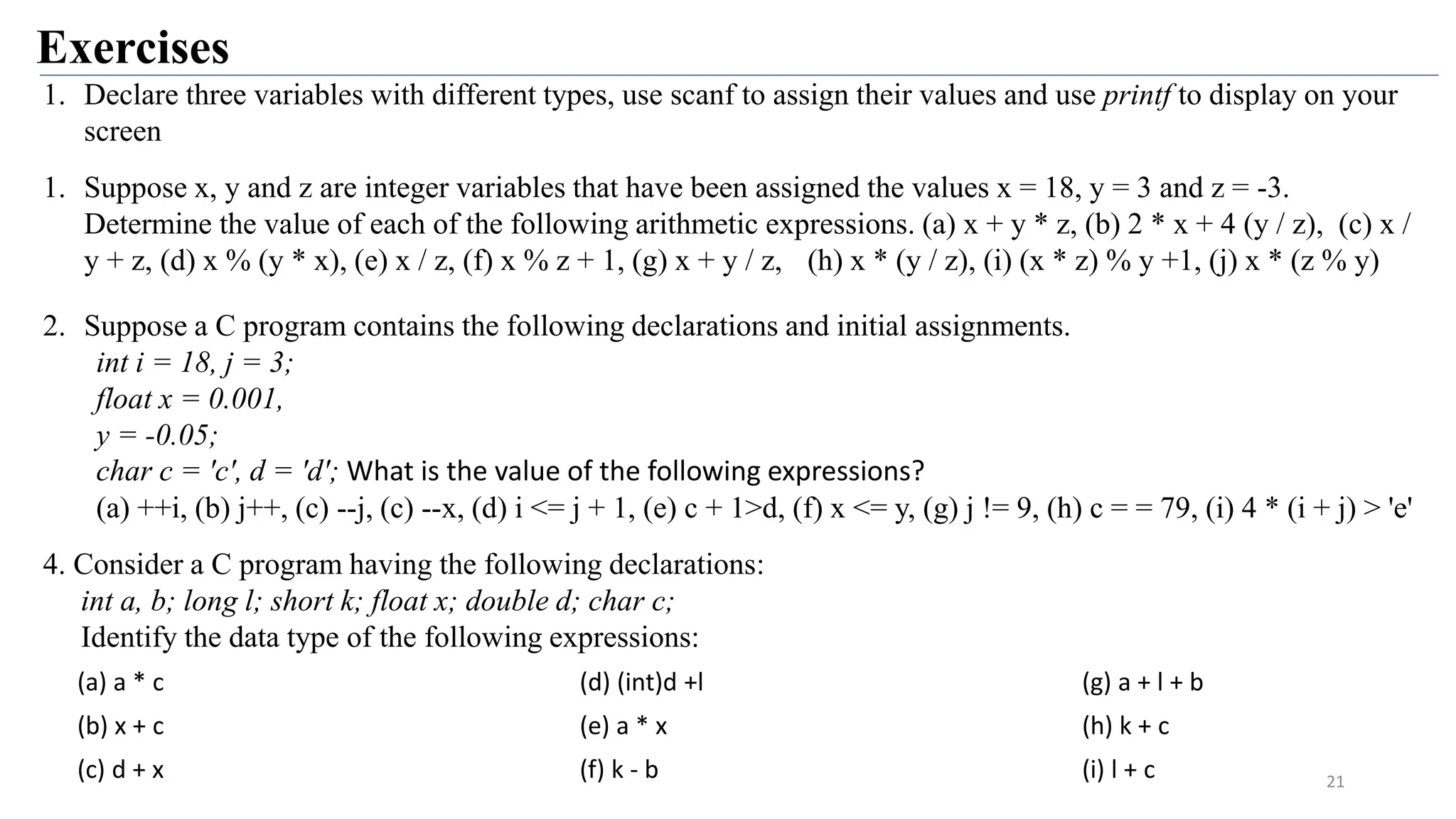The document discusses types, operators, and expressions in C programming. It covers various data types in C like integers, characters, and floating-point numbers. It also describes different operators for arithmetic, relational, logical, and bitwise operations. Finally, it discusses constants, format specifiers for input/output functions, variable declarations, and assignment operators.



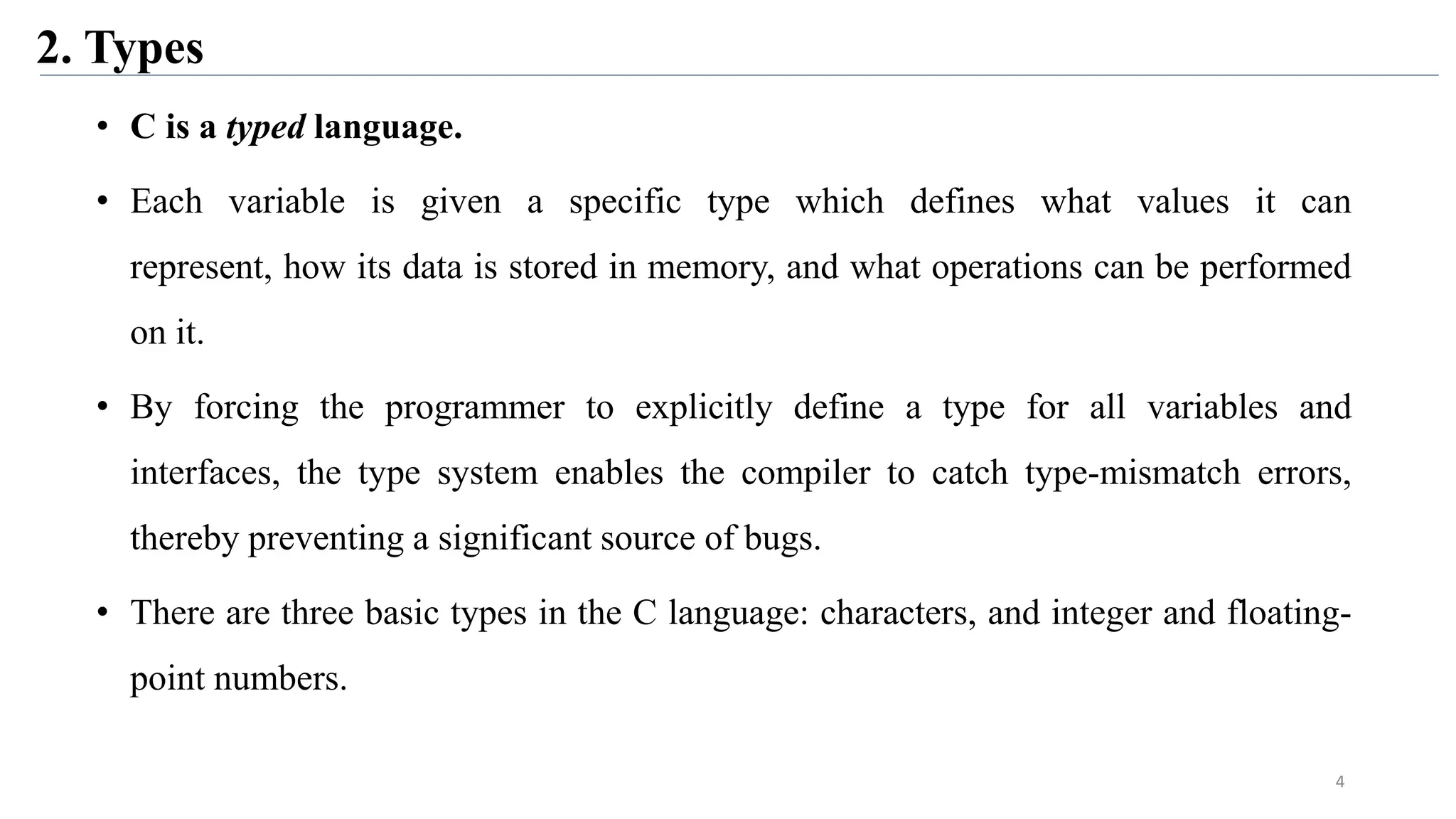
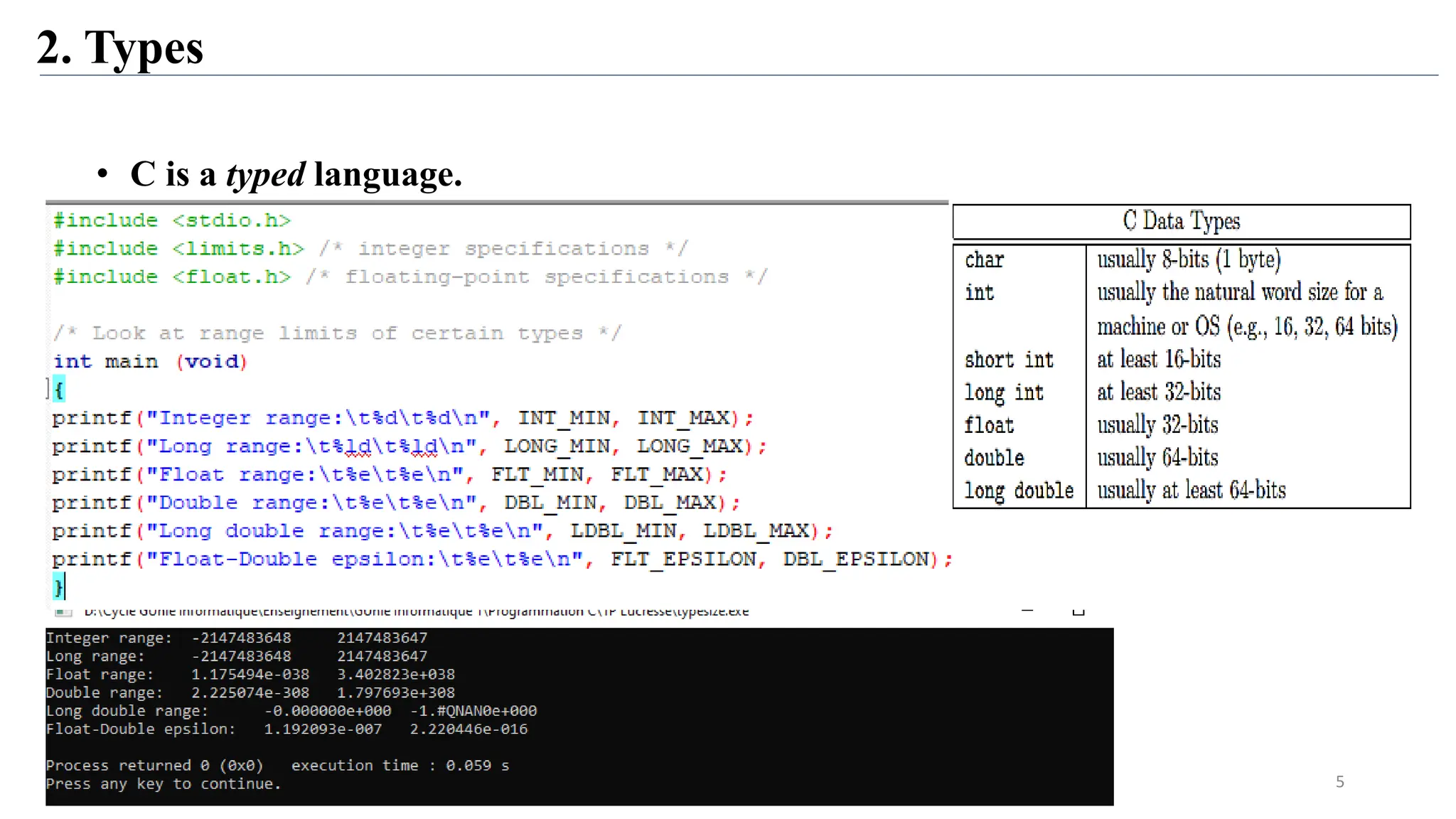
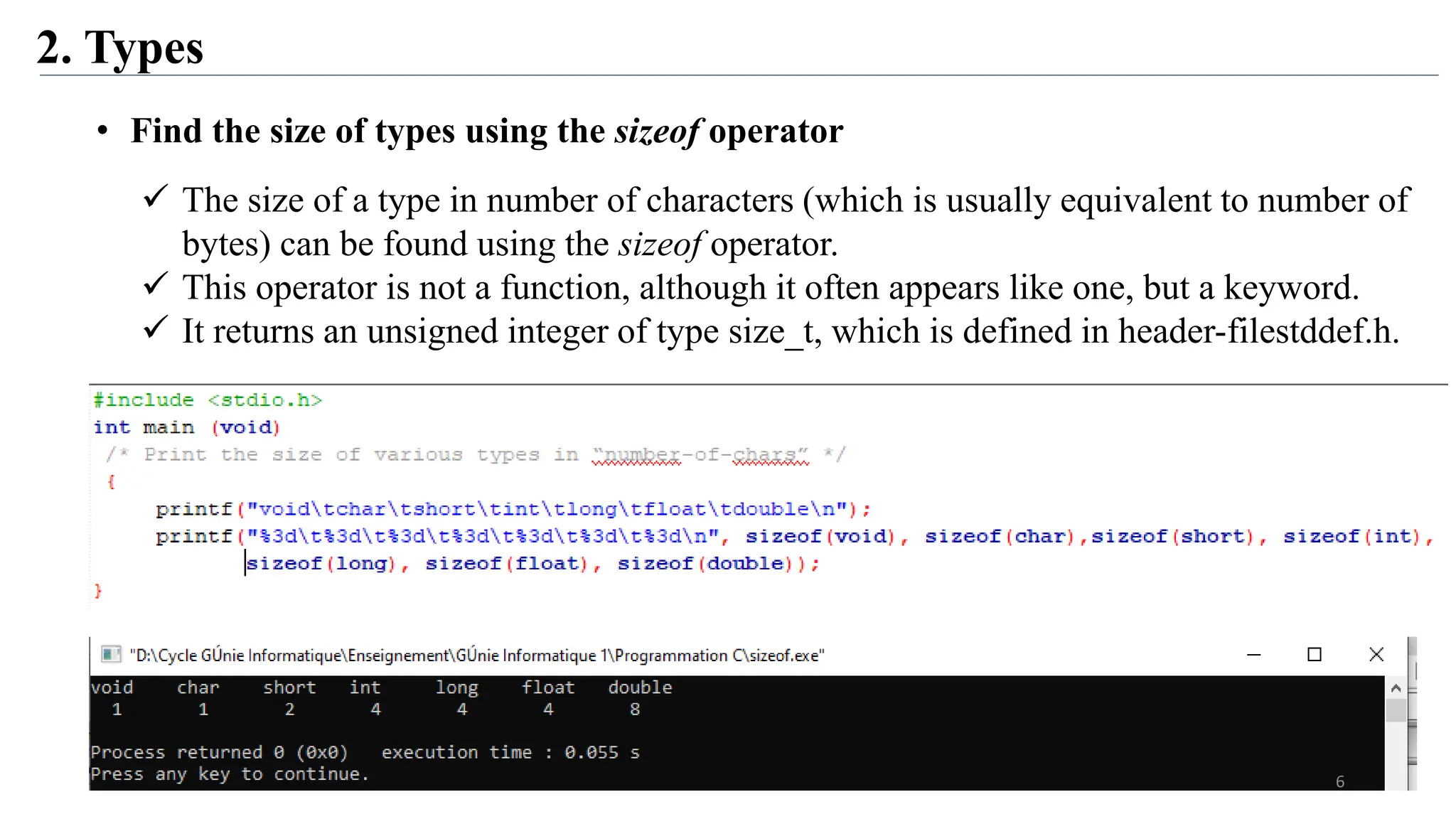
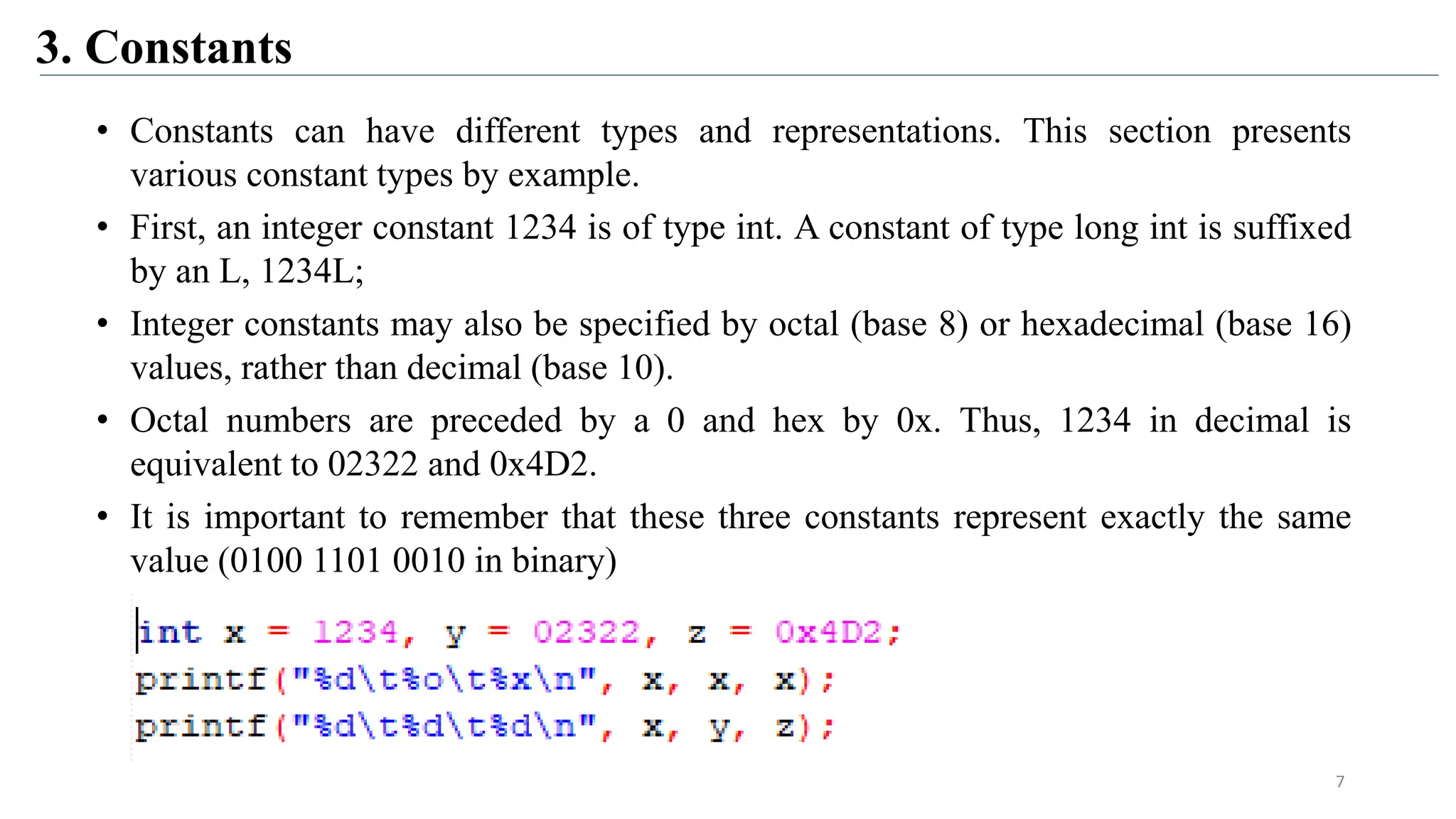
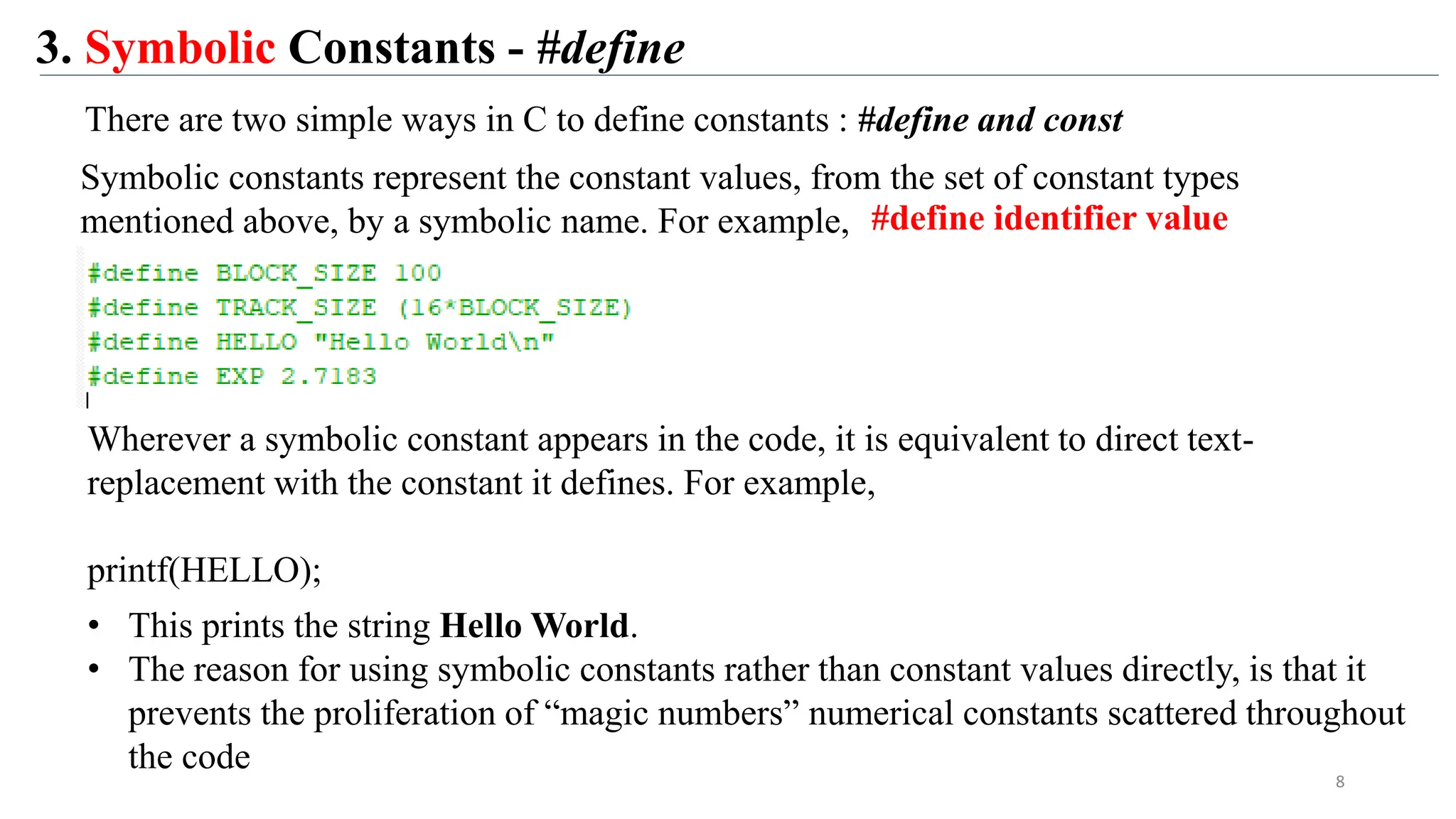

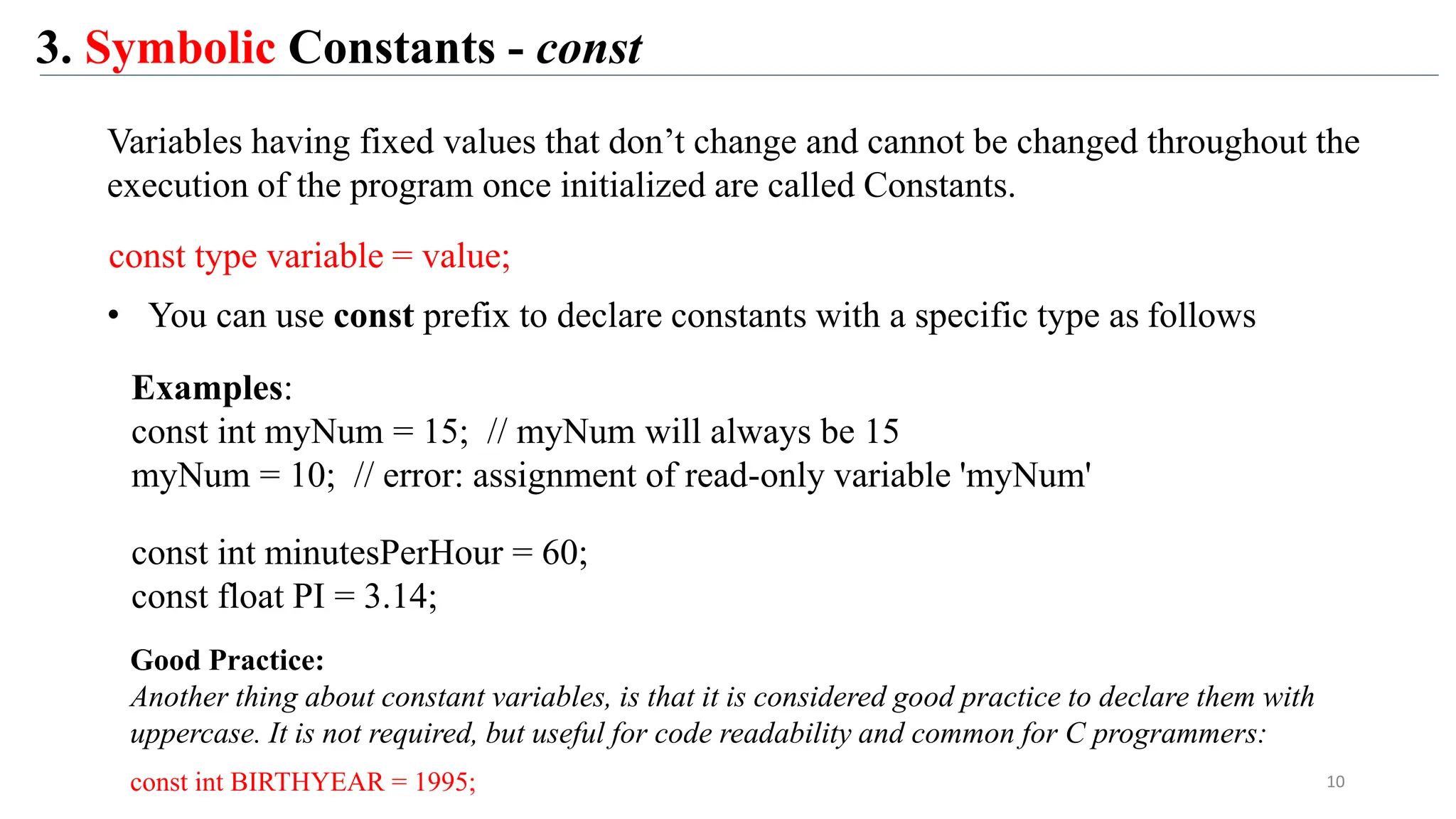
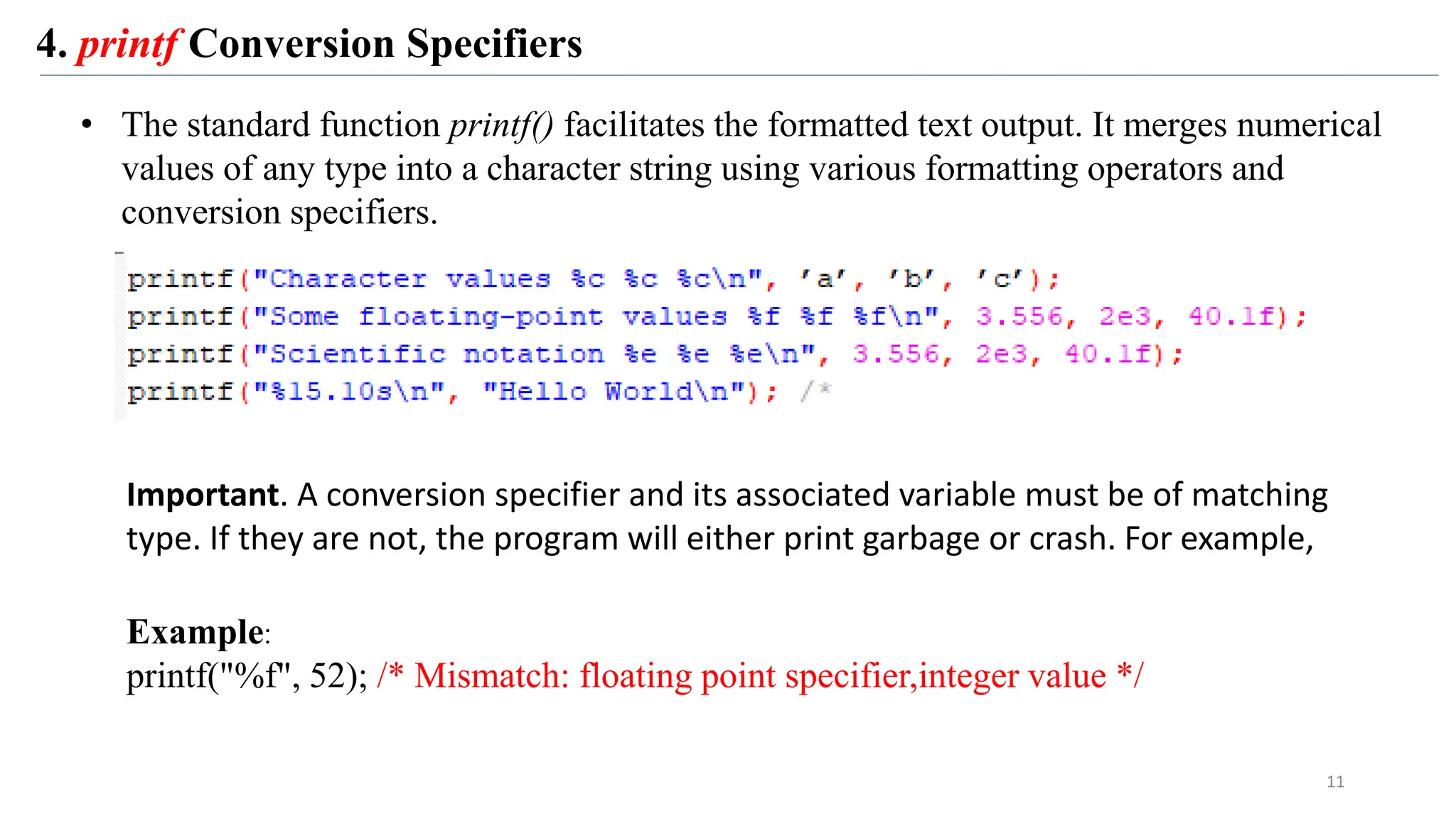
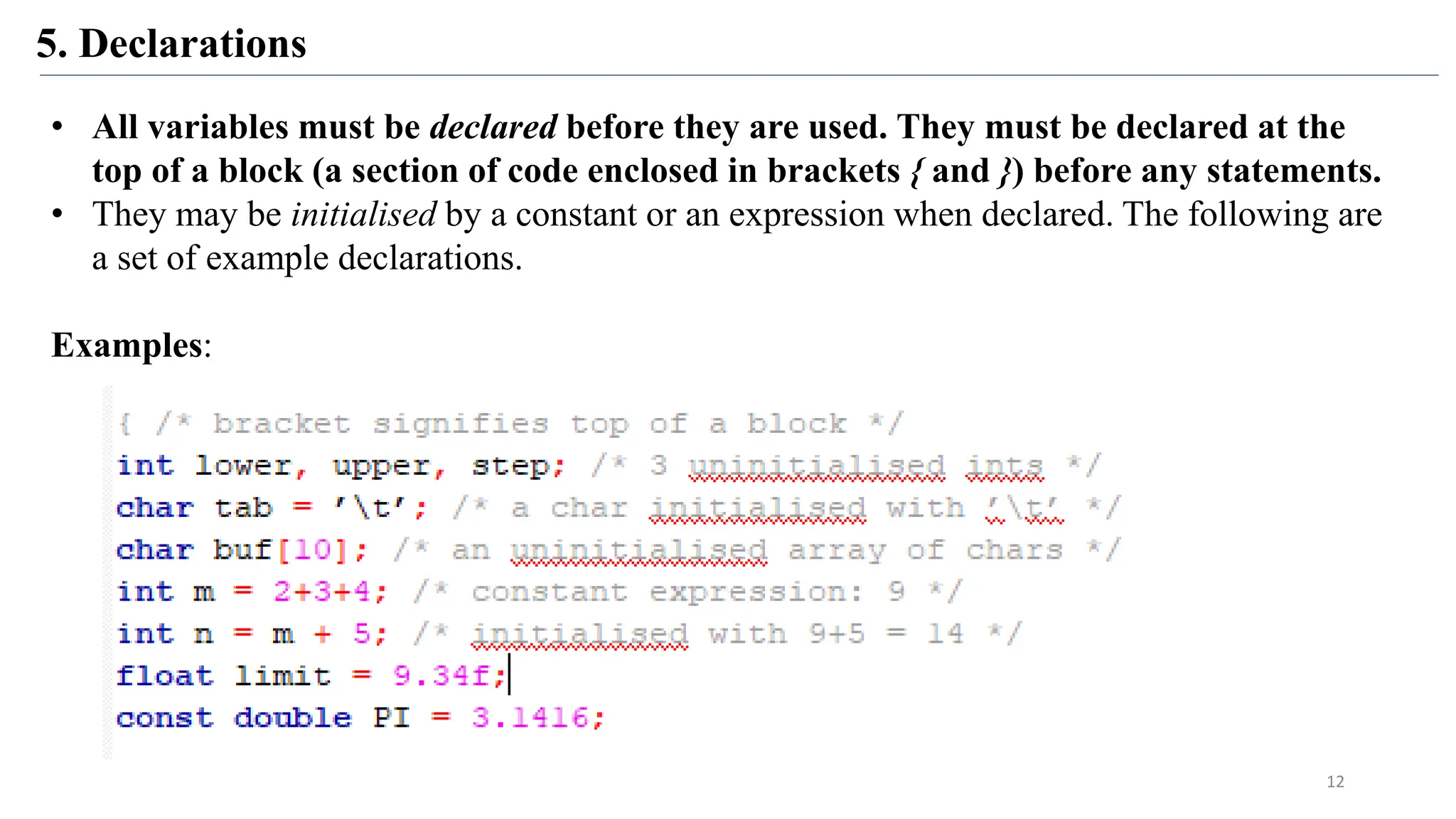
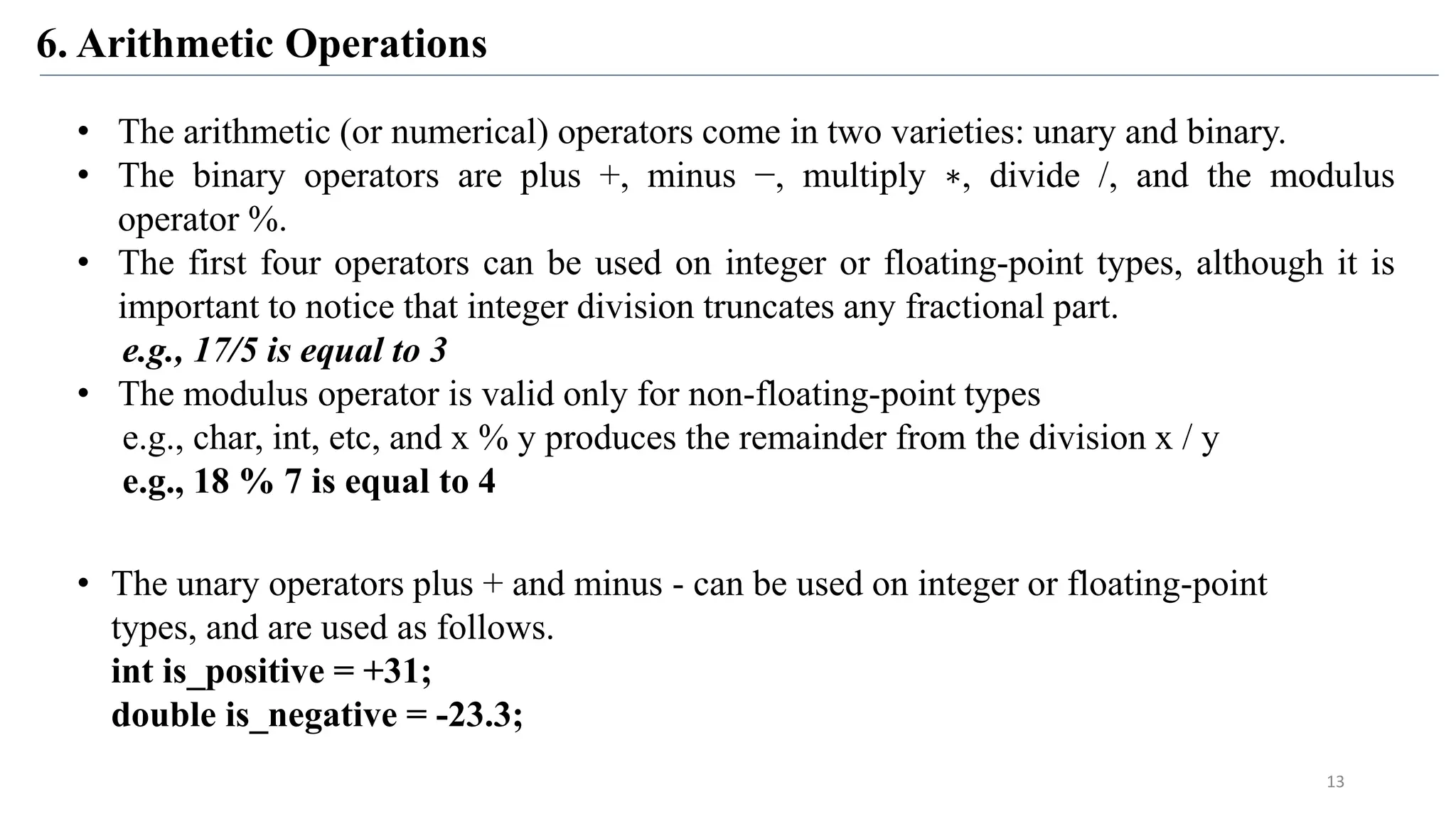
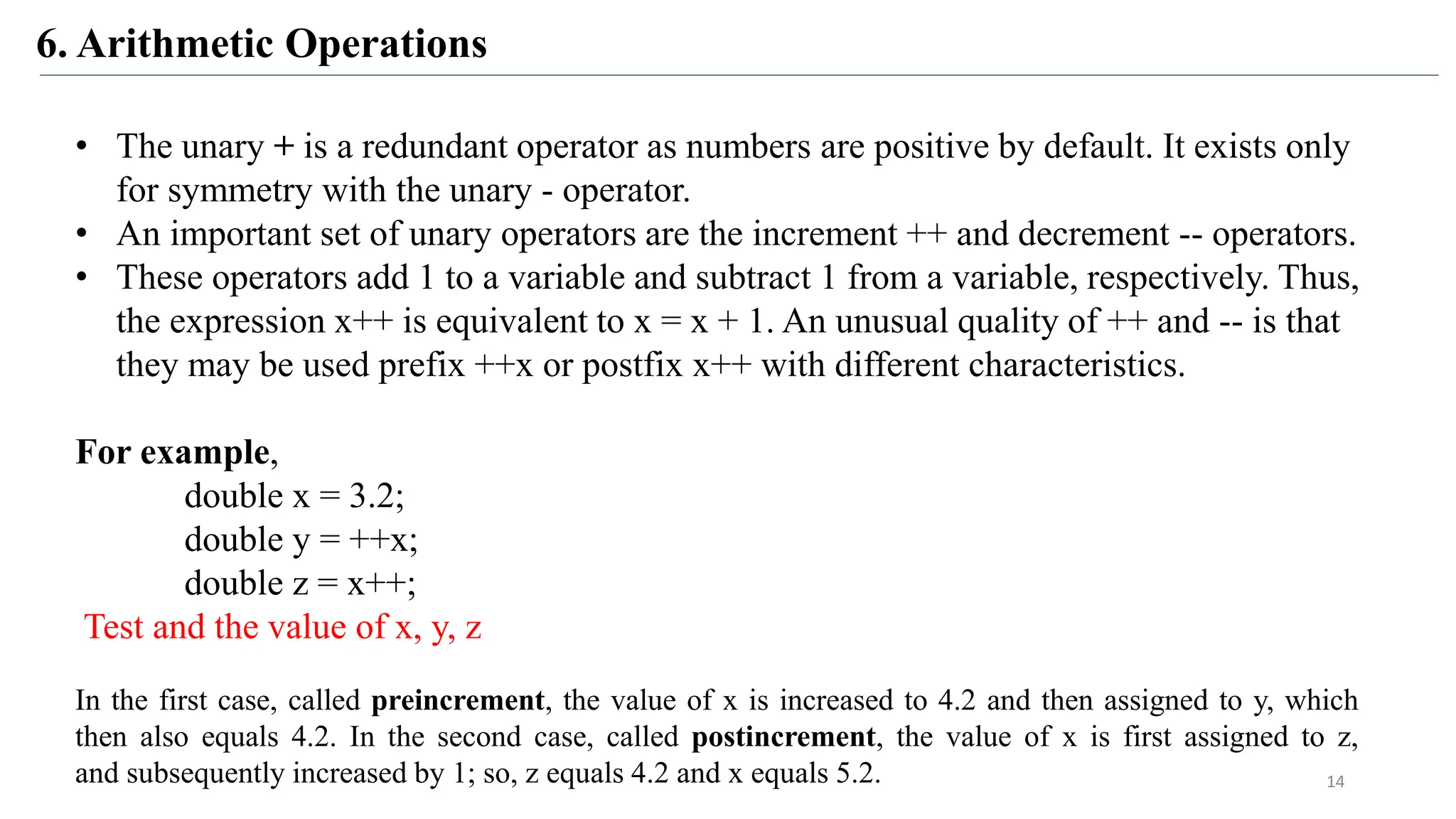
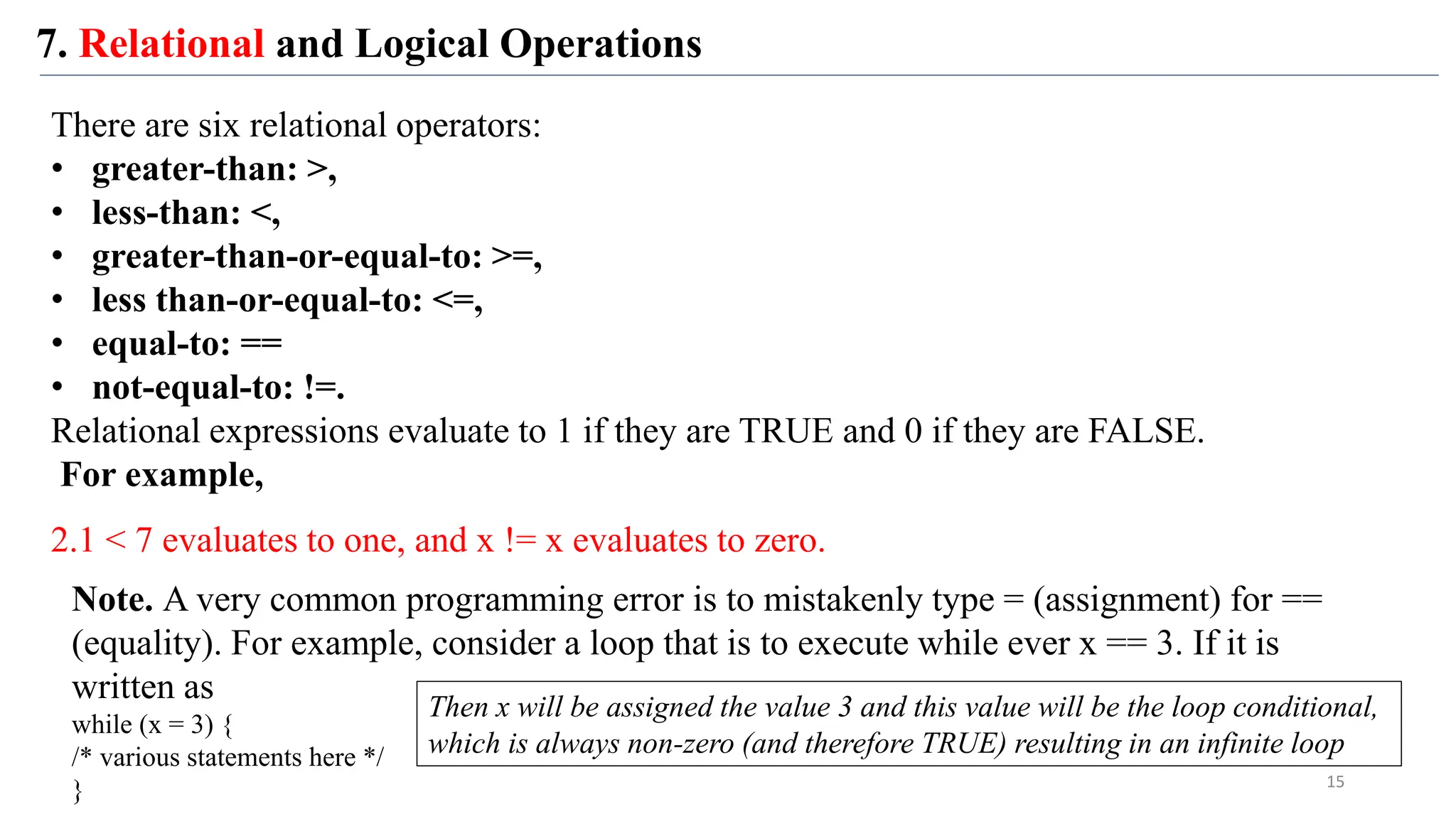
![7. Relational and Logical Operations
16
• The three logical operators are AND && and OR || and NOT !.
• All the relational and logical operators are binary except the !, which is unary.
• The && and || operators connect pairs of conditional expressions, with && being TRUE
only if both expressions are TRUE, and || being TRUE if either expression is TRUE.
• They can be used to chain together multiple expressions, as in the following example
where, given the integer values a=1, b=2, c=3, d=3,
(a < b && b < c && c < d) /* FALSE */
(a < b && b < c && c <= d) /* TRUE */
((a < b && b < c) || c < d) /* TRUE */
• The order of evaluation of && and || is left-to-right, and evaluation stops as soon as the truth or
falsehood of the result is known
• leaving the remaining expressions unevaluated. This feature results in several common idioms in C
programs.
• For example, given an array of length SIZE, it is incorrect to evaluate array[SIZE], which is one-
beyond the end of the array. But, we can write: i = 0;
while (i < SIZE && array[i] != val)
++i;
if (!valid)
x = y;
if (valid == 0)
x = y;](https://image.slidesharecdn.com/s-240307043318-243e4a7c/75/Lamborghini-Veneno-Allegheri-2004-f-ck-16-2048.jpg)

